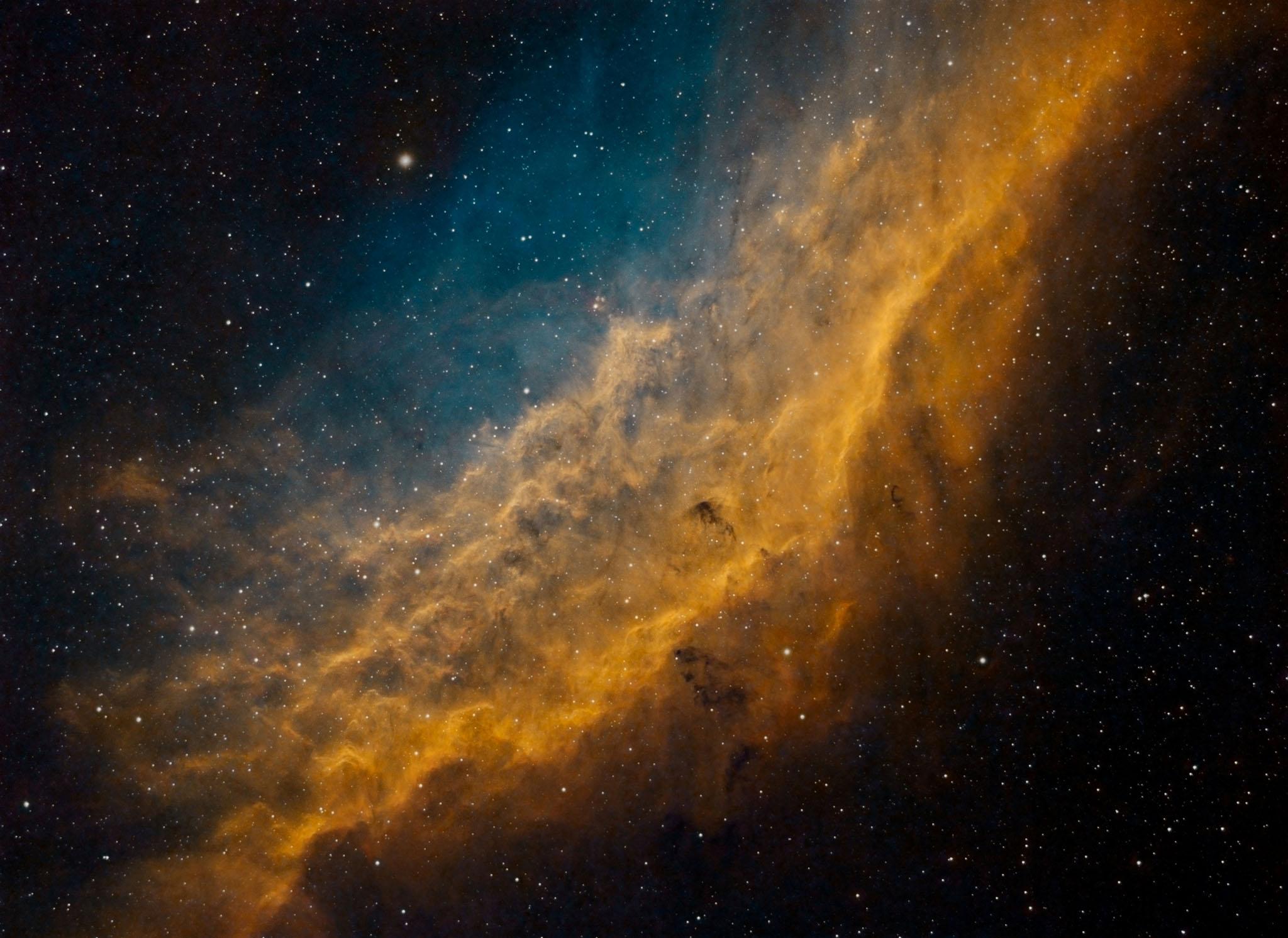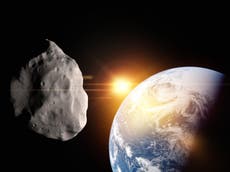AS the ‘God of Chaos’ asteroid speeds past earth, it may end up protecting us from more dangerous foes to come
Currently, the best plan for redirecting an asteroid is to punch it hard enough to slow it down, but for that to work, we’ll need to understand what kind of object we’re trying to hit
Jillian Scudder @Jillian_Scudder
Dr Jillian Scudder is assistant professor of physics at Oberlin College and Conservatory
The asteroid 99942 Apophis is 340 meters across, and coming our way, but it won’t get too close. On 13 April, 2029, this asteroid will zoom past the Earth, allowing scientists a close-up view of an asteroid without needing to travel to it.
Between the discoveries made by spacecraft orbiting other asteroids, Ryugu by Hayabusa 2, Bennu by Osiris ReX, and others, the asteroids which litter our solar system have turned out to be a diverse bunch of objects. But typically we have to sent robotic craft out to see them – it’s rare that they come so close to us, especially large ones like Apophis, named after the Egyptian god of chaos.
So last week, scientists began to plan. They have been given a brief window to observe this asteroid in high resolution, so what would they like to do? What data would be most helpful to understand larger asteroids in detail? And also, how will they be able to spot and understand changes on the surface of the asteroid as it passes by the Earth?
Apophis has been tracked reliably since its discovery in 2004, when its orbit was initially so poorly understood that there was a concern it might strike the Earth directly.
Since then, additional data has fine-tuned our understanding of its path, traced by gravitational forces, through our solar system, and while it will skim rather close to us – 31,000 kilometers – it will remain far enough away that nearly two and a half Earths could fit between the surface of our planet and the asteroid’s path.

If it’s missing us, why study it in so much detail? Apophis is by no means the only asteroid that has the potential to swing so close by the Earth; there are about 2,000 such objects in the solar system that we know about. And it’s worth knowing. An asteroid impact on the surface of the planet could be catastrophic; after all, it was an asteroid thought to be about 30 times larger than Apophis that triggered the extinction of the dinosaurs.
The end goal of studying these Earth-crossing asteroids is to be able to avoid disaster if an asteroid is discovered that will strike the Earth if no action is taken.
If Apophis is typical of asteroids which cross the Earth’s orbit, then by studying it in detail we learn about the type of objects we’ll be dealing with, should a hazardous asteroid be found.
Currently, the best plan for redirecting an asteroid is to punch it hard enough to slow it down even by a few minutes, allowing the Earth to pass in front of the asteroid unperturbed. But for that to work, we’ll need to understand what kind of object we’re trying to hit. The response of a pile of rocks loosely held together by gravity would have a very different response than one with more structure to it.
Watch more

Between the discoveries made by spacecraft orbiting other asteroids, Ryugu by Hayabusa 2, Bennu by Osiris ReX, and others, the asteroids which litter our solar system have turned out to be a diverse bunch of objects. But typically we have to sent robotic craft out to see them – it’s rare that they come so close to us, especially large ones like Apophis, named after the Egyptian god of chaos.
So last week, scientists began to plan. They have been given a brief window to observe this asteroid in high resolution, so what would they like to do? What data would be most helpful to understand larger asteroids in detail? And also, how will they be able to spot and understand changes on the surface of the asteroid as it passes by the Earth?
Apophis has been tracked reliably since its discovery in 2004, when its orbit was initially so poorly understood that there was a concern it might strike the Earth directly.
Since then, additional data has fine-tuned our understanding of its path, traced by gravitational forces, through our solar system, and while it will skim rather close to us – 31,000 kilometers – it will remain far enough away that nearly two and a half Earths could fit between the surface of our planet and the asteroid’s path.

If it’s missing us, why study it in so much detail? Apophis is by no means the only asteroid that has the potential to swing so close by the Earth; there are about 2,000 such objects in the solar system that we know about. And it’s worth knowing. An asteroid impact on the surface of the planet could be catastrophic; after all, it was an asteroid thought to be about 30 times larger than Apophis that triggered the extinction of the dinosaurs.
The end goal of studying these Earth-crossing asteroids is to be able to avoid disaster if an asteroid is discovered that will strike the Earth if no action is taken.
If Apophis is typical of asteroids which cross the Earth’s orbit, then by studying it in detail we learn about the type of objects we’ll be dealing with, should a hazardous asteroid be found.
Currently, the best plan for redirecting an asteroid is to punch it hard enough to slow it down even by a few minutes, allowing the Earth to pass in front of the asteroid unperturbed. But for that to work, we’ll need to understand what kind of object we’re trying to hit. The response of a pile of rocks loosely held together by gravity would have a very different response than one with more structure to it.
Watch more

Nasa preparing for arrival of huge asteroid named 'God of Chaos'
Apophis is a fun object to study because of its size, and the fact that it is (and it’s worth reiterating) definitely missing Earth.
An asteroid doesn’t have to be that large to do damage on the surface. The meteor that exploded over Chelyabinsk, Russia in 2013 was a much smaller object than Apophis – only about 20m or so – and even that was enough to shatter windows and set off car alarms, and a number of people were injured, mostly from the flying shattered glass.
Over a bigger city, or at a busier time of day, a slightly bigger object could easily have done much more damage.
Apophis, won’t be disruptive to us here on Earth, but what we can learn from it might help avoid chaos in the future. In the meantime, mark your calendars, because you may be able to see it zip past the Earth with the naked eye, as gravity pulls it inexorably inwards to the sun.
Apophis is a fun object to study because of its size, and the fact that it is (and it’s worth reiterating) definitely missing Earth.
An asteroid doesn’t have to be that large to do damage on the surface. The meteor that exploded over Chelyabinsk, Russia in 2013 was a much smaller object than Apophis – only about 20m or so – and even that was enough to shatter windows and set off car alarms, and a number of people were injured, mostly from the flying shattered glass.
Over a bigger city, or at a busier time of day, a slightly bigger object could easily have done much more damage.
Apophis, won’t be disruptive to us here on Earth, but what we can learn from it might help avoid chaos in the future. In the meantime, mark your calendars, because you may be able to see it zip past the Earth with the naked eye, as gravity pulls it inexorably inwards to the sun.
 |
| RA AS HORUS DEFEATS APOPHIS |


No comments:
Post a Comment